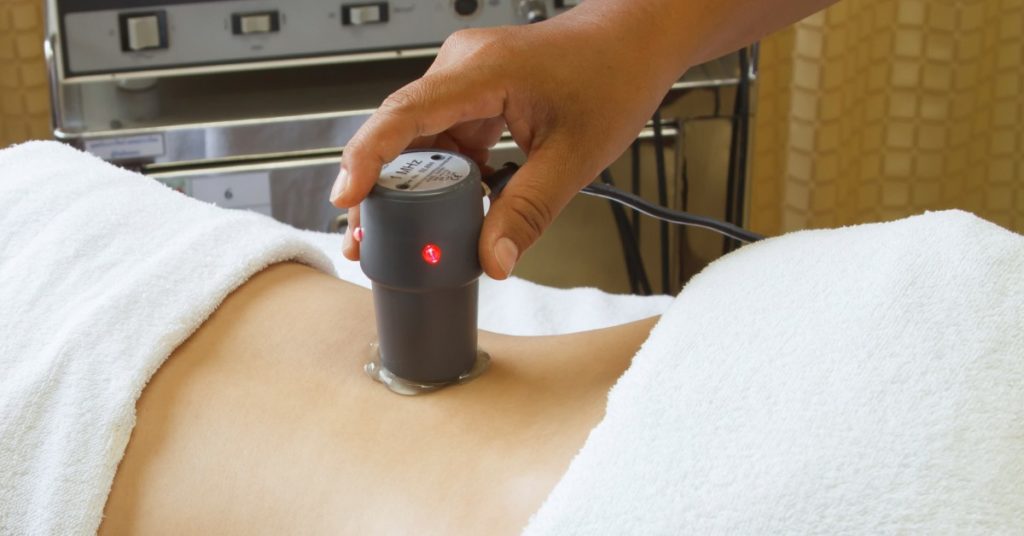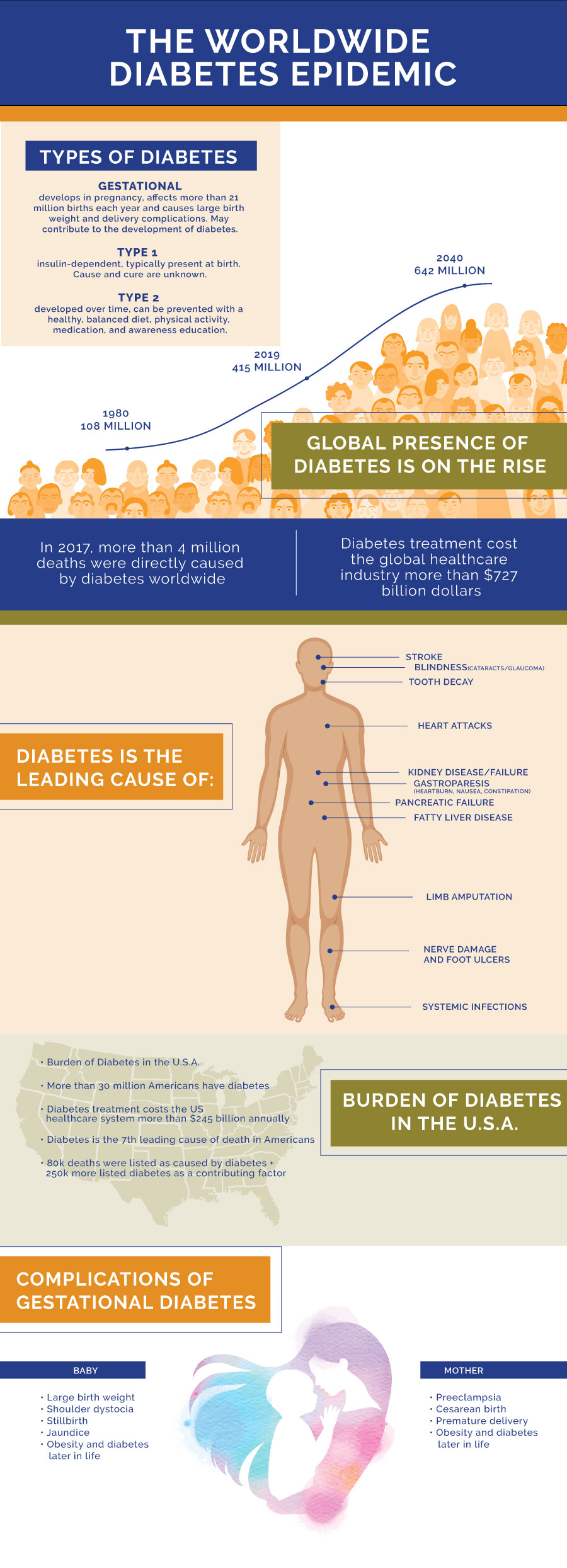November is World Diabetes Month, with World Diabetes Day celebrated around the globe each November 14th. Discussing diabetes and raising awareness is important because type 2 is preventable and is on a very dramatic rise. In 1980, there were 108 million cases of diabetes worldwide, and currently, more than 415 million people live with diabetes, with an estimation that more than 642 million people will be diagnosed with diabetes by 2040. To say that diabetes is a public health crisis is an understatement.
Recent research shows there may be hope in diabetes treatment with the use of ultrasound. In today’s post, we are going to narrow in on this new research and discuss the future role of medical imaging in diabetes treatment and management. At Touchstone Imaging Centers, we use the latest radiology equipment and techniques to keep up with current medical best practice and we are excited about the potential of using ultrasound to treat diabetes.
A Diabetes Review
Before we jump right into how ultrasound may be useful in the treatment of diabetes, let’s review what diabetes is and how it works within the body. Every time you consume something, your digestive system gets to work breaking down the food to a chemical level. Some of these chemicals, including vitamins and nutrients, are readily used to keep the body functioning properly. Glucose is a simple form of energy created from sugars in food. Insulin is the body’s glucose sensor that responds to keep the blood glucose levels stable. In a person who suffers from diabetes, the insulin response system does not work correctly.
A normal blood sugar level is between 70 and 120 mg/dL, which may rise after eating. Your body should be able to respond accordingly and return your blood glucose level back to below 140 mg/dL within two hours of eating. When your body doesn’t have enough glucose, it is not able to function at optimal levels. Symptoms of low blood sugar include sweating, paleness, irritability, hunger, fatigue, and lack of coordination or concentration — think hangry! When you experience low blood sugar, you may crave something high in fat, carbs, or sugar, as these are easy to quickly break down, however, healthier options that will provide a longer boost in glucose without overloading your system include milk or yogurt, mixed nuts, or fruit — ideally, berries. For very low blood glucose levels, a small bit of honey or fruit juice will give a nice boost.
When there is too much glucose circulating in the blood, it may overstimulate body systems and can cause a number of serious issues. Symptoms of high blood glucose levels include increased thirst, frequent urination, headache, blurred vision, and weakness. When left untreated, high levels of glucose can lead to a toxic level of ketones in the blood that may result in coma and death. Consistent exposure to high blood glucose levels can damage nerves and blood vessels, resulting in heart and kidney failure, high blood pressure which may lead to a heart attack or stroke, nerve damage resulting in neuropathy in limbs, inability to manage infection, and damage to optic nerves that results in changed vision and blindness.
Type 1 Diabetes
In type 1 diabetes, the body’s immune system attacks the beta cells in the pancreas that are responsible for making insulin. This is why those who have type 1 diabetes are insulin-dependent — their body does not make insulin.
Type 2 Diabetes
In type 2 diabetes, the body is continuously exposed to an excess of glucose, usually by poor diet and lack of exercise. Diets high in processed sugar, carbohydrates, and trans fats are difficult for the body to process quickly and expose the body to higher levels of glucose for longer periods of time. Over time the sensors that drive insulin production become overwhelmed and begin to stop functioning as well. This leads to poor glucose control that may worsen over time. Prediabetes is the time where the pancreas is still creating insulin, but is struggling to keep up with the body’s demand. With an improved diet and an increase in physical activity, the pancreas may be able to adjust. However, once there is permanent damage, a type 2 diabetic may require medication or insulin to stimulate the beta cells or to provide supplemental insulin.
Now that you have a better understanding of diabetes and how it works in the body, let’s review what an ultrasound is.
The Science Behind Ultrasound
Ultrasound, also called sonography, uses sound waves to produce images of the inside of the body. A transducer emits high-frequency soundwaves, that are not audible to the human ear. The sound is emitted through the skin and creates echoes within the body. The sound waves bounce back, creating shadows, and images that are used to identify the size, shape, and density of tissue and organs. Ultrasounds can be used to assess organs, blood flow, and conditions affecting soft tissue.
The Use of Ultrasound in Diabetes Treatment
Putting together what we know about diabetes and the science behind ultrasound technology, researchers have discovered that the soundwaves produced by ultrasound may have an effect on diabetes. A biomedical engineer at George Washington University, Vesna Zderic, has used the ultrasound waves to stimulate beta cells in the pancreas of mice. Stimulating the beta cells of the pancreas triggers the release of insulin and the response to high glucose levels. The success of this ultrasound treatment has had in mice gives hope to the medical community in the promise of translating this research to humans.
Other scientists have also used the technology of ultrasound to stimulate the brain to release signaling chemicals that trigger the pancreas to respond with insulin, bypassing the beta cells completely.
The use of ultrasound as opposed to diabetes medication has several positive benefits. First, diabetic drugs are very costly and, like most medications, cause unpleasant side effects. Lifelong management of diabetes lends way to skyrocketing costs as well as long term side effects. Secondly, and more importantly, ultrasound stimulation coupled with weight loss, improved diet, and increased exercise has the potential to “cure” diabetes and reduce or eliminate the need for lifelong treatment.
At Touchstone Imaging, we have been providing ultrasound for a variety of uses for decades. Our radiology technologists are experts at using ultrasound to provide high-quality images for an accurate diagnosis. Although we do not yet use ultrasound technology to treat or manage diabetes, we are excited about the future of medical imaging and our potential role in the global battle on diabetes. If you need an ultrasound, or any other diagnostic imaging test, we hope you consider our radiology clinics. Visit us online to learn more about our services, find a location near you, and contact us to schedule your appointment today.



